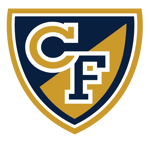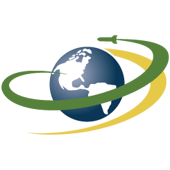The Promise of Personalized Learning
Personalized learning (PL) tailors the learning experience to meet the unique needs, abilities, interests, and paces of individual students. It moves away from the traditional "one-size-fits-all" model of education and instead aims to provide a more customized and flexible learning journey for each student. But, similar to many other terms in education, “personalized learning” is often used as a buzzphrase without a solid understanding of key concepts, goals, and implementation strategies.
Even more importantly, key elements of the most successful implementations of PL — including student agency tied to the opportunity to choose personalized educational pathways — are often overlooked. Key aspects of PL include:
- Customization: Educational content, activities, and assessments are adjusted based on the learner's interests, abilities, and progress. This ensures that the learner is challenged appropriately and can engage with the material in a meaningful way.
- Individual Pace: Learners are allowed to progress through the material at their own pace. This means that advanced students can move ahead more quickly, while those who need more time can take the necessary time to grasp concepts.
- Data and Analytics: Technology often plays a significant role in personalized learning by collecting data on students' performance and progress. This data is then used to make informed decisions about how to tailor the learning experience further.
- Choice and Autonomy: Learners are given some degree of control over their learning path, allowing them to choose topics of interest, projects, or activities that align with their passions.
- Teacher Role: Teachers act more as facilitators and guides rather than traditional instructors. They provide support, guidance, and resources to help learners navigate their individualized learning paths.
- Collaborative Learning: Collaboration and peer interaction are often encouraged, allowing students to learn from each other and share their perspectives and insights.
Next-Generation Personalized Learning: Personalized Learning Pathways
The key aspects of PL revolve around student agency, ownership, and choice.
And yet, many educators’ views of agency and ownership remain limited, focused on issues such as the student choosing a science lab topic, or a book, to meet the student’s preferred interests.
What if, instead, the student was able to choose their pursuits of interest, combine internships with school, take college-level courses, and determine their own daily and weekly schedule?
Personalized pathways are one of the most important aspects of personalized learning, and they already exist in schools across many states. Districts are creating online schools and hybrid schools, which combine online and onsite instruction. They are also using online courses within traditional, physical schools, to offer additional course options for students and to provide scheduling flexibility. In these cases, students choose their own educational path with the help of a teacher and/or counselor, often combining their educational goals with other interests; they combine their academic, career, and life goals.
Examples of schools providing PL Pathways include:
 |
At Crossroads FLEX in North Carolina, each student selects a “pursuit” — an area of interest that is then supported by the student’s academic schedule. Students focus on their pursuits, often outside of school, using the school’s flexible scheduling to allow them time for their pursuits. |
| Valor Preparatory Academy of Arizona operates on a hybrid learning model that is focused on student and family ownership of learning, as explained by Principal Dan Mahlandt: “We empower students and parents to make decisions for themselves on the education they want, and we don’t make time the constant, instead focusing on actual learning. With this model, we can change education and make sure that what the students need drives us.” | |
 |
Poudre Global Academy in Colorado offers a hybrid schedule in which students go to the physical school on a regular schedule for two days a week while learning from home on the other dates. Unlike some other hybrid schools which serve only high school students, PGA works with students in grades K-12. |
These schools rarely look like a traditional learning environment. Instead, they look more like a library, or a tech start-up. Students mix working from home, from school, and from other locations. They explore jobs, internships, and interests such as arts or sports. They also take control of their academic trajectories while working closely with teachers, mentors, and counselors from their schools.
This is what the core of Personalized Pathways looks like in action.
Keys to Success in Personalized Learning
Regardless of the type of school, several factors are critical to success. These include:
- High-quality digital curriculum and assessment — Student ownership of learning is made possible by offering a range of high-quality courses and content. A diverse range of learning resources, materials, and activities cater to different learning preferences. A mix of digital and traditional resources engages students and provides flexibility. Teachers and adaptive learning platforms adjust content, pacing, and difficulty based on student performance and learning trajectories.
- Professional development for teachers — Teachers play a central role in implementing personalized learning, but a teacher trained in traditional teaching methods can’t be expected to shift into a new teaching modality without extensive support. Schools or districts should provide comprehensive training on personalized learning strategies, instructional technology tools, data analysis, and differentiated instruction.
- Data for all — One benefit of online content and platforms is the data that teachers can use to understand their students. But data can be used by others as well. Students can quickly rate their understanding of difficult topics or change their pathway based on the data they receive. School leaders and caregivers can also have a view into the progress being made by individual students or entire classes.
- Addressing the whole student through mental health (SEL) supports — Addressing the whole student is critical. Schools focused on next-generation PL recognize that students do better academically when they are fully healthy both physically, mentally, and emotionally. Schools that support the full range of social and emotional learning help their students become better learners.
StrongMind keeps students at the center of learning. We don’t believe in a one-size-fits-all solution. We believe students should have choice and autonomy in their education, and the opportunity to learn at their own pace. StrongMind supports personalized learning in a number of ways — high-quality K-12 digital courses, SEL, implementation and training support, and meaningful data to keep all stakeholders informed. StrongMind provides students with opportunities to collaborate and drive their learning, and we equip teachers with the tools to they need to thrive.
